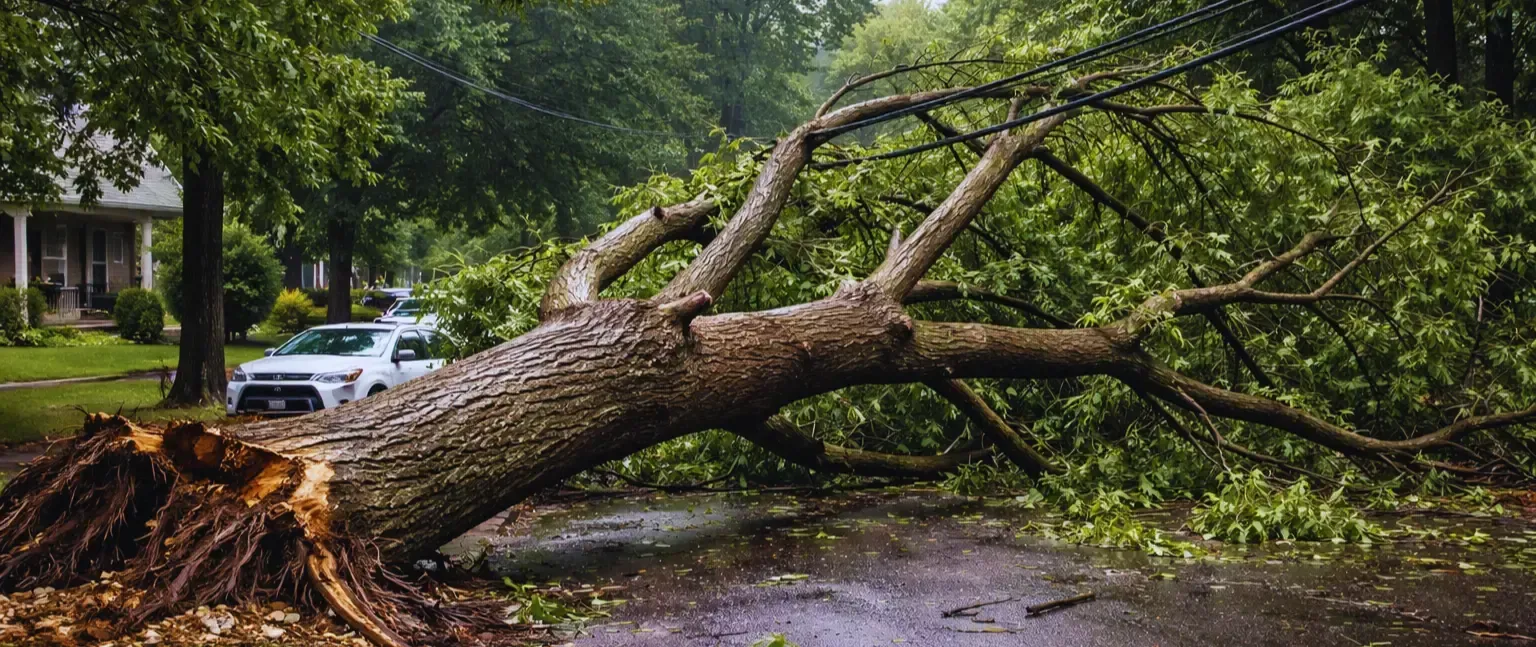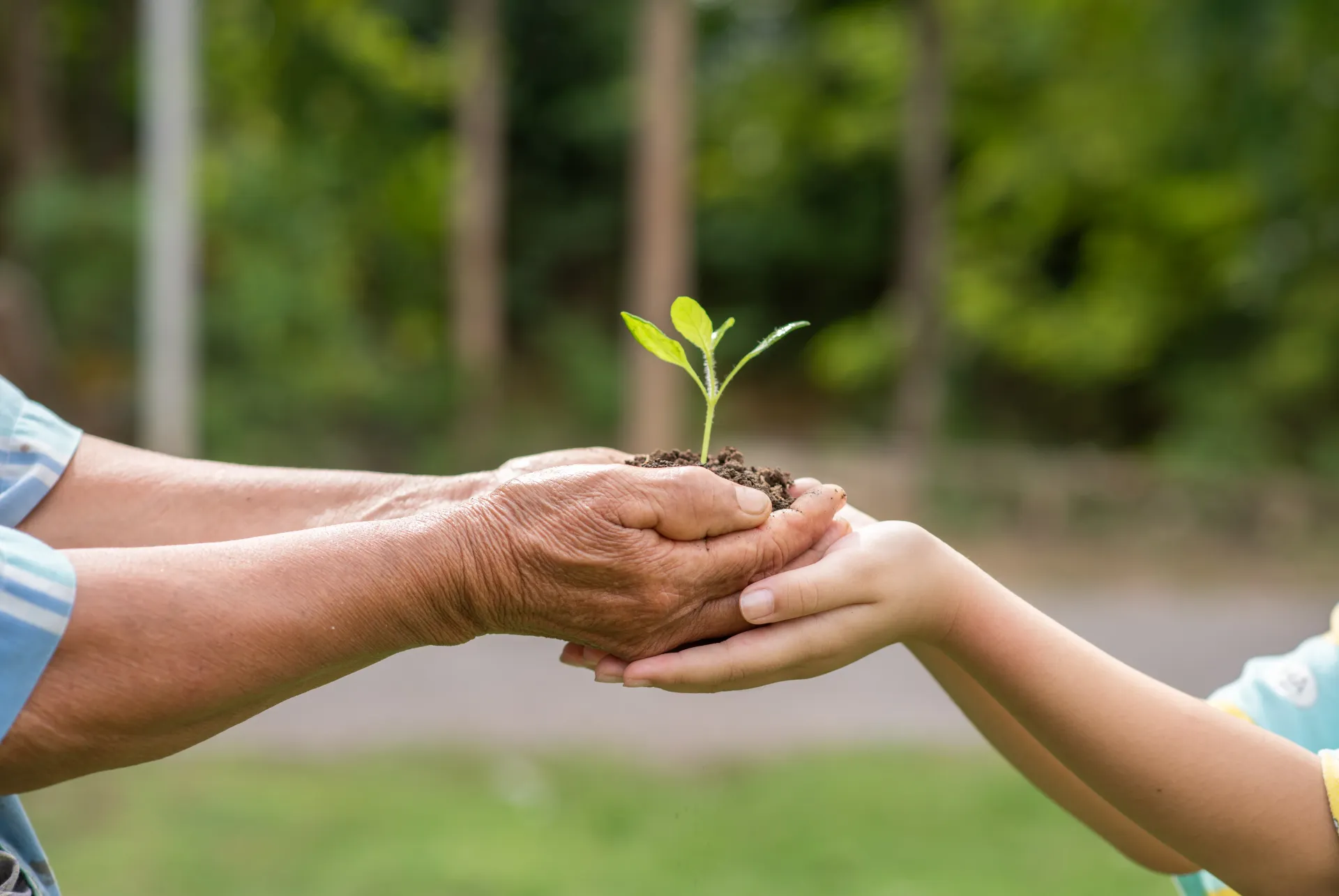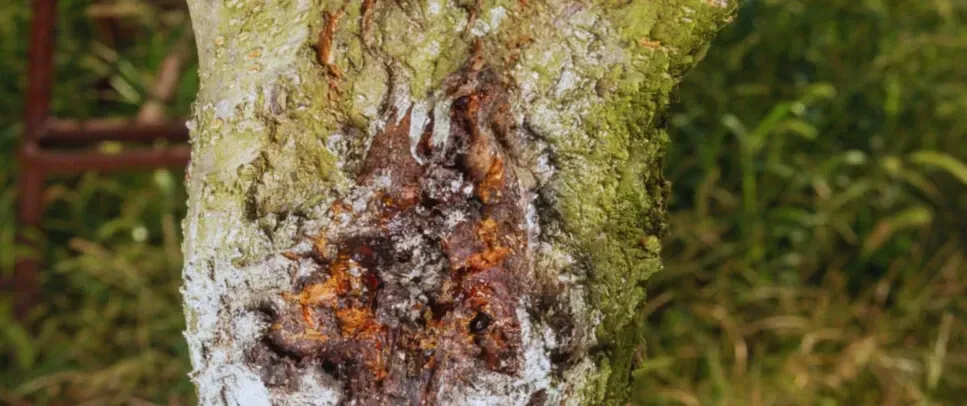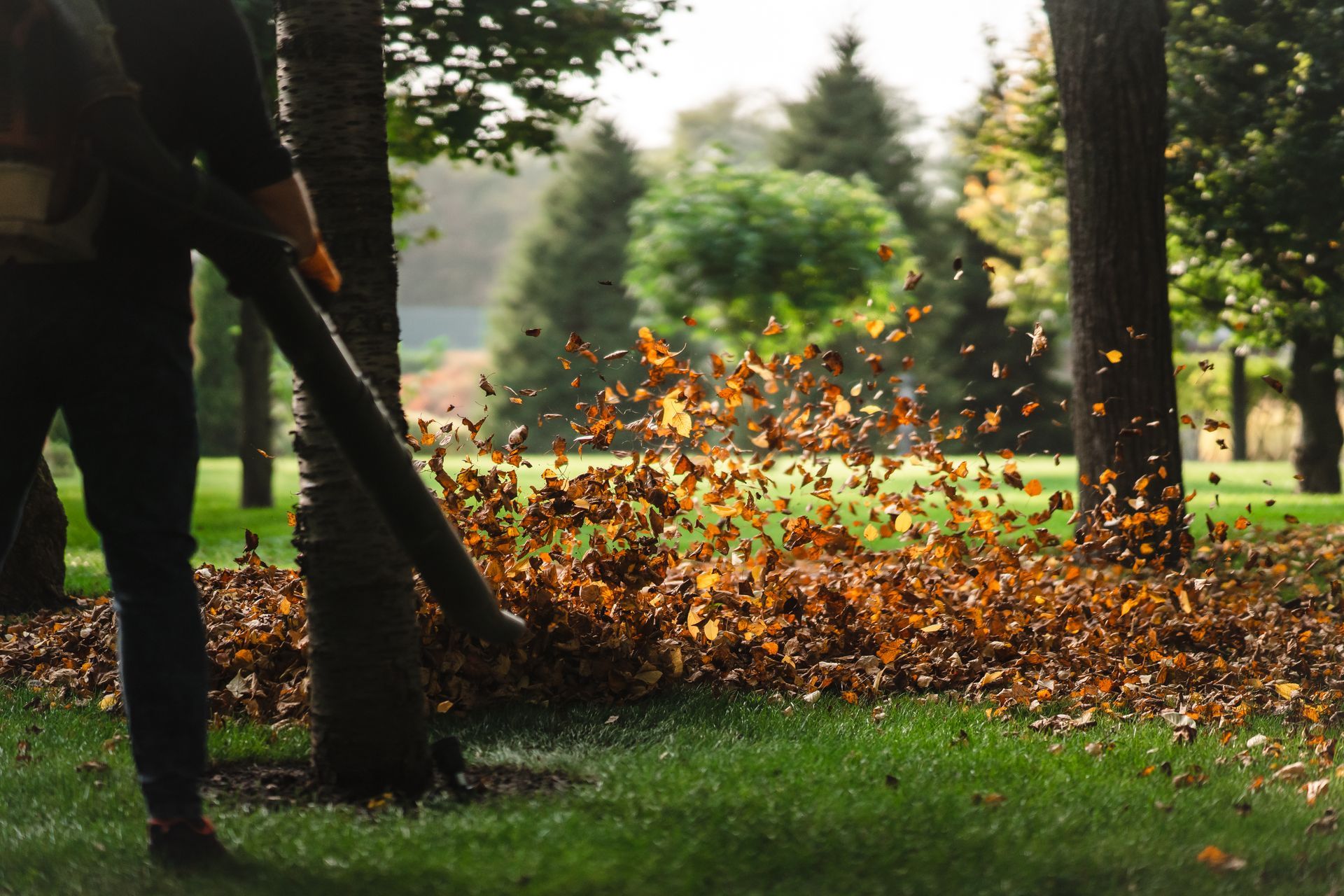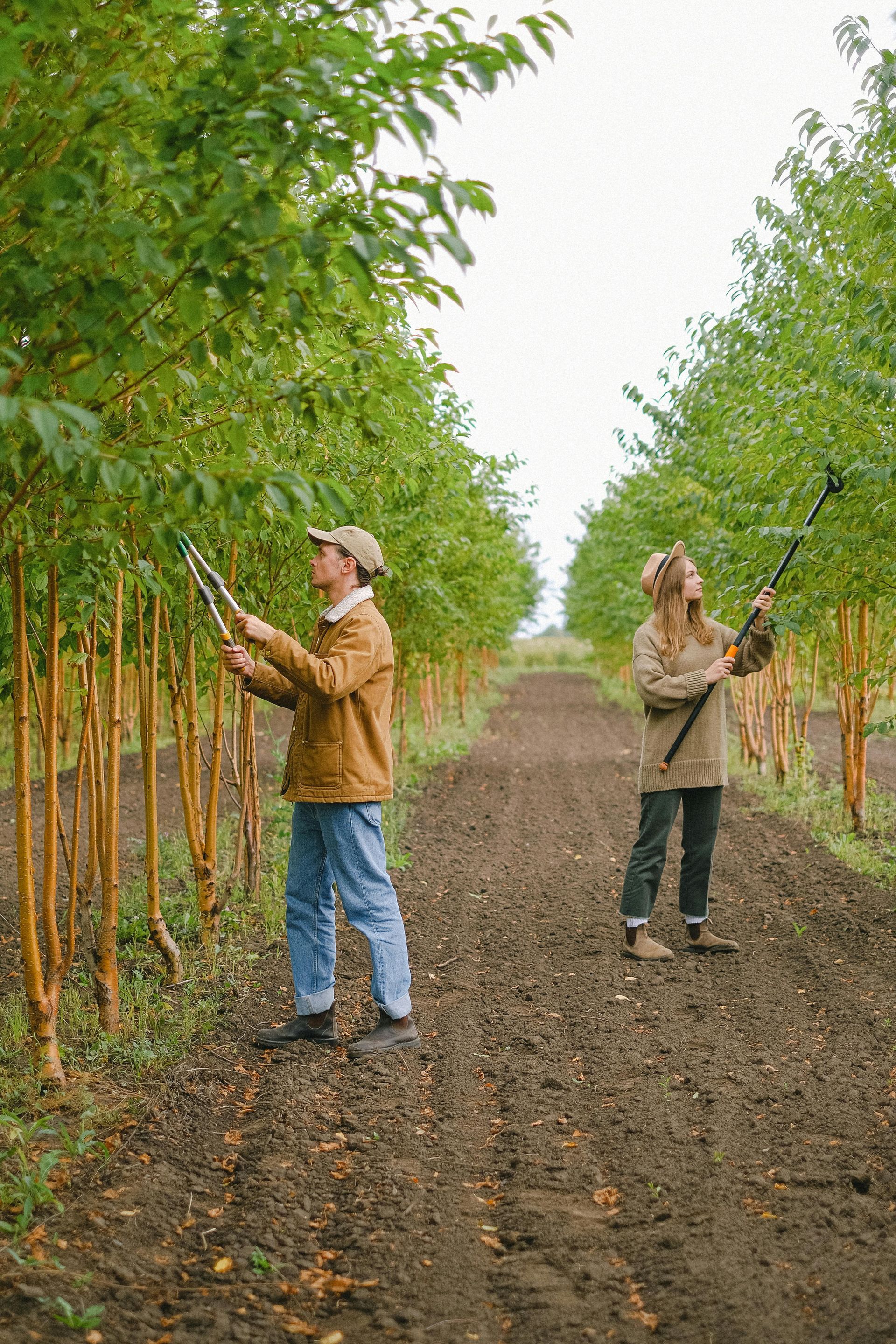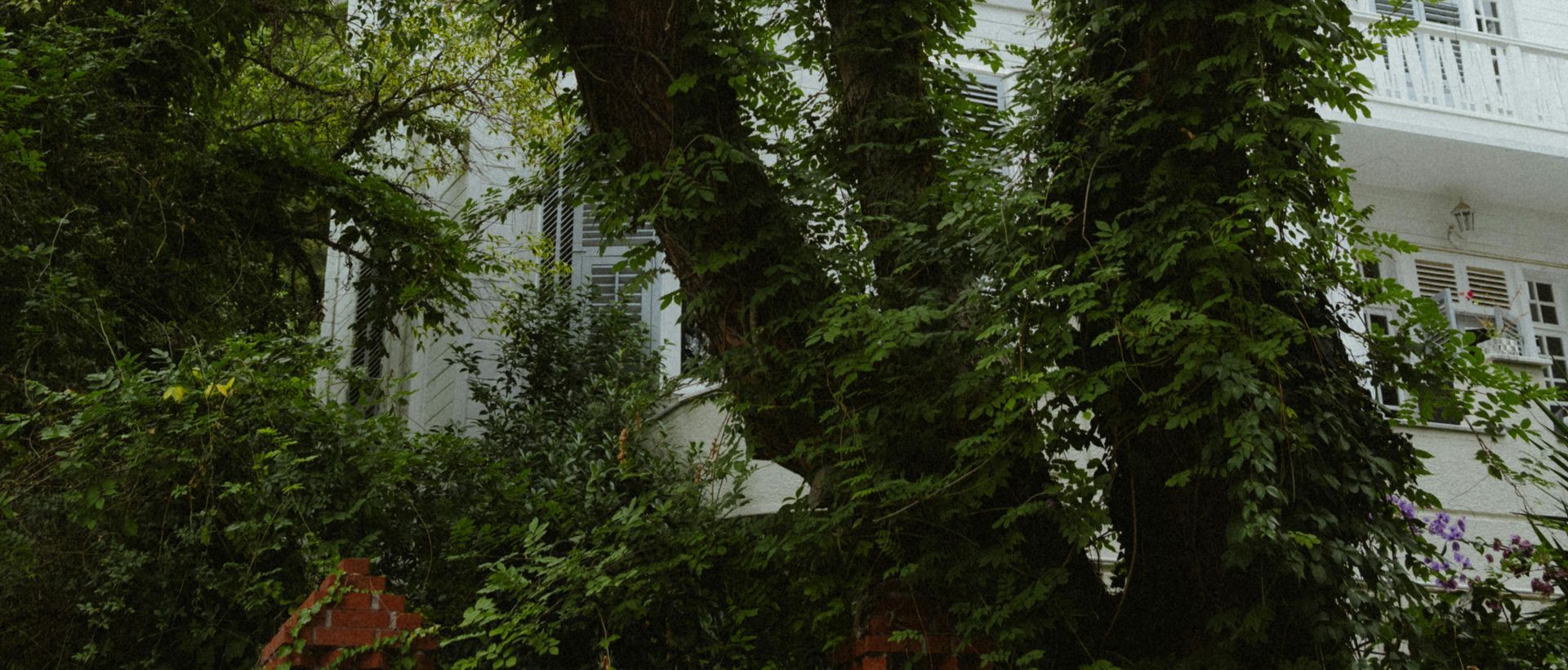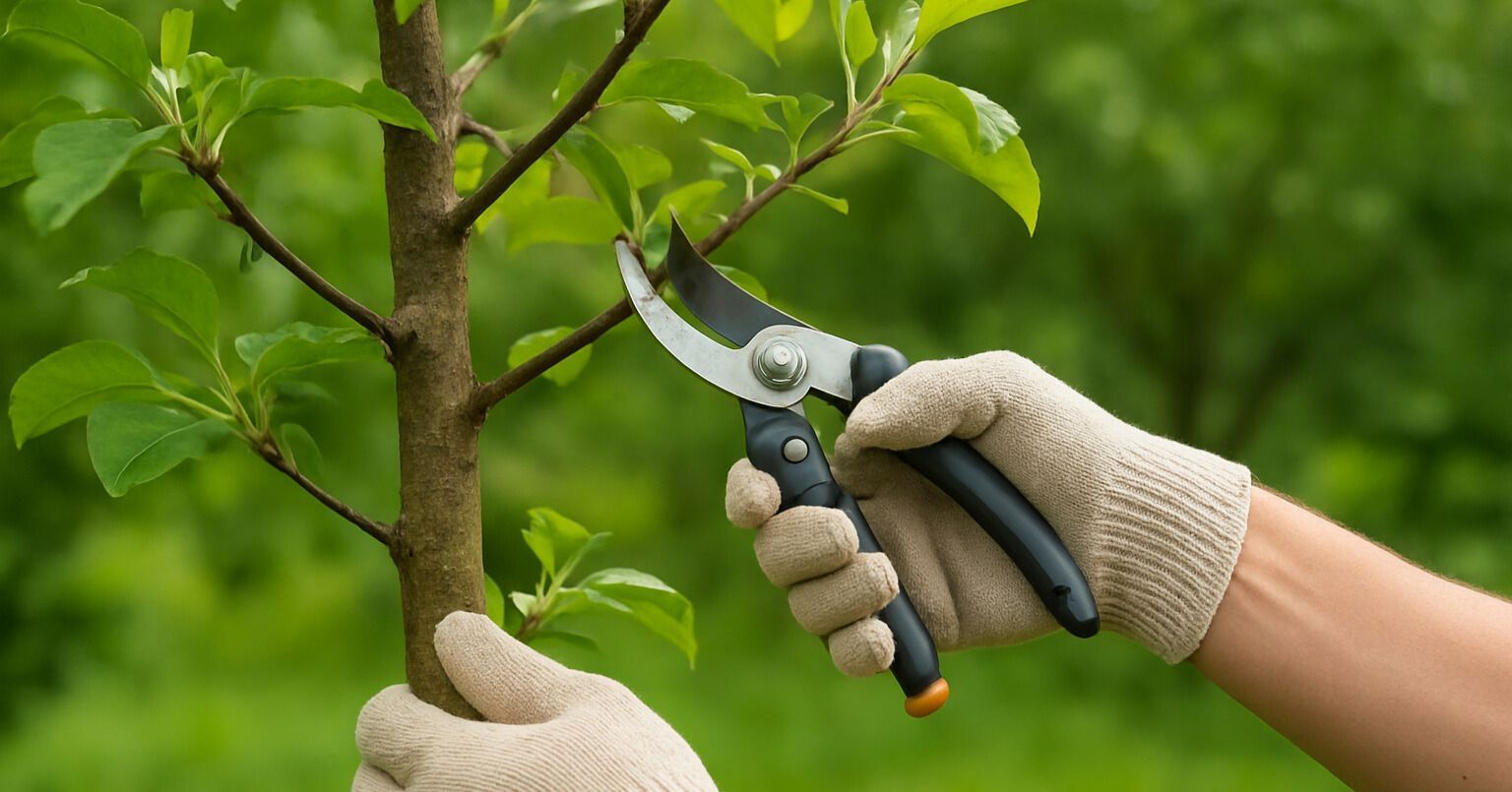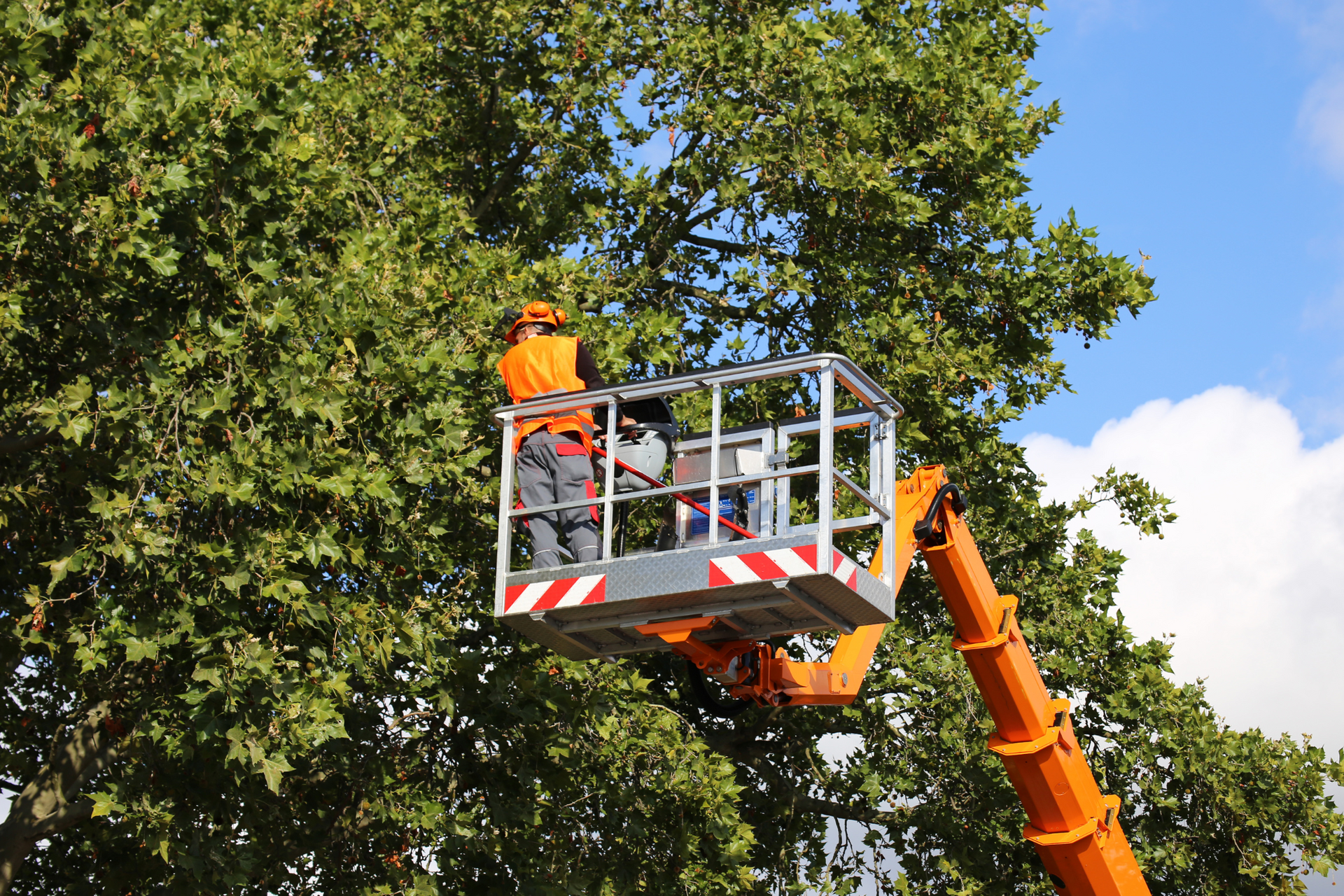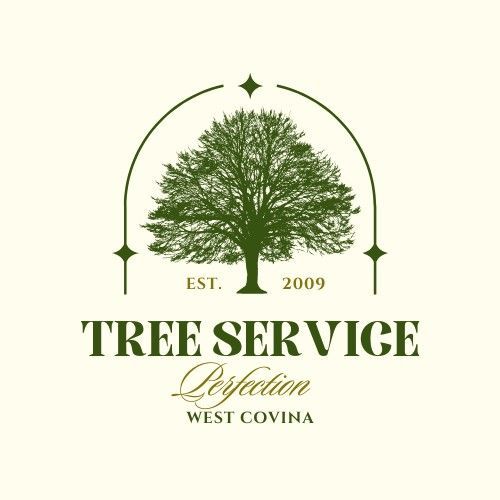How Tree Cabling and Bracing Can Save Your Trees from Structural Failure
Introduction
Trees are among nature's greatest gifts—providing beauty, shade, and even emotional connection. But like all living things, trees can grow vulnerable, especially when their structure is compromised. Just as a broken bone needs a cast, a weak tree may need support. That’s where tree cabling and bracing come in. These powerful techniques have saved countless trees from splitting, toppling, or dying prematurely. In this article, we’ll explore how these support systems work and why they’re essential in maintaining the health and safety of your trees.
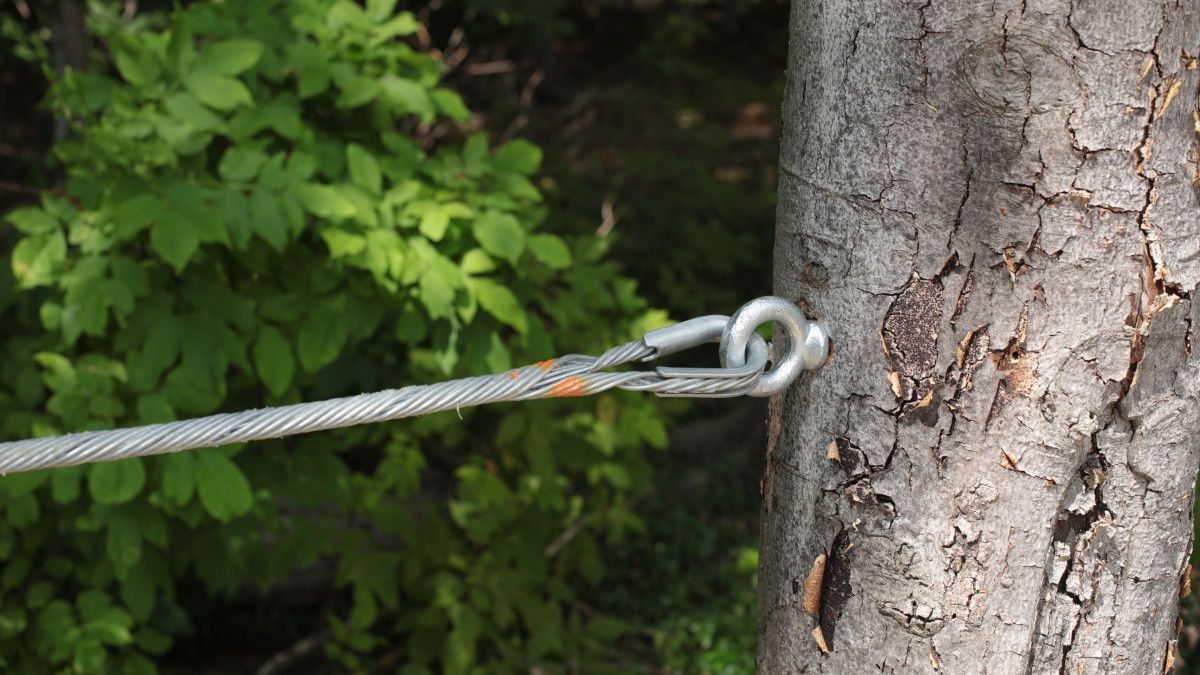
Understanding Structural Failure in Trees
Structural failure in trees often begins subtly. It might be a heavy branch leaning too far, a visible crack in the trunk, or a tree that splits in a strong wind. Factors like uneven growth, storm damage, or natural aging can make a tree unstable. Without intervention, these issues can lead to falling branches or even complete tree collapse—posing risks to property, people, and the tree itself.
What Is Tree Cabling and Bracing?
Tree cabling and bracing are support systems designed to strengthen weak parts of a tree. Cabling involves using high-strength steel cables to limit the movement of branches, reducing stress during storms. Bracing uses rods or bolts installed in the trunk or limbs to hold the structure together. Both methods aim to keep the tree stable and prevent failure over time.
The Science Behind Tree Stability
Trees rely on their root system, trunk strength, and branch angles to remain upright and balanced. When one element becomes weak—like a co-dominant trunk or an unbalanced canopy—the tree is at risk. Cabling and bracing work with a tree’s natural growth by redistributing mechanical stress and reducing movement, helping the tree heal and grow stronger over time.
Benefits of Tree Cabling and Bracing
- Enhanced Safety: Prevents limbs from falling and trees from collapsing in high winds.
- Extended Tree Life: Allows damaged or weakened trees to live many more years.
- Cost Efficiency: Cheaper than removing and replacing a mature tree.
- Preservation of Beauty: Maintains the natural shape and landscape value of your trees.
- Protection of Property: Reduces the risk of property damage from falling branches or trees.
Looking for expert help? Check out our Tree Service to keep your trees strong and safe.
Common Tree Defects That Need Support
Some trees develop naturally weak structures. These include:
- V-shaped crotches between co-dominant stems
- Cracks or splits in trunks or large limbs
- Overextended branches prone to snapping
- Heavy canopies or unbalanced growth
- Old storm damage that hasn’t healed properly
If your tree shows any of these signs, it may need cabling or bracing.
How Tree Cabling Works
Cabling involves installing high-strength cables between major branches or stems. These cables are anchored to help distribute stress evenly. As wind or weight shifts, the cables reduce excessive movement, preventing branches from breaking or splitting further.
The process usually includes:
- Choosing anchor points on major limbs
- Drilling holes for eye bolts
- Attaching cables with special hardware
- Tensioning the system without restricting growth
How Tree Bracing Works
Bracing is often used alongside cabling. While cabling limits movement, bracing holds a tree together. Steel rods are inserted through splits or between co-dominant trunks to provide rigid support.
Key steps in bracing:
- Identifying the weak area
- Drilling through the trunk or branch
- Installing threaded rods or bolts
- Sealing with tree-safe materials
Cabling vs. Bracing: Which Is Better?
Cabling is flexible and allows for some natural movement, making it ideal for limbs and canopies. Bracing, on the other hand, is rigid and used for major splits or trunk damage. Often, arborists will use both together for best results—especially on older, valuable trees.
When Should You Cable or Brace a Tree?
Timing is critical. Ideally, trees should be supported before a major failure occurs. Late spring or early summer is often the best time, as foliage weight increases. You should also inspect trees:
- After strong storms
- If cracks or leaning limbs are visible
- During routine tree maintenance
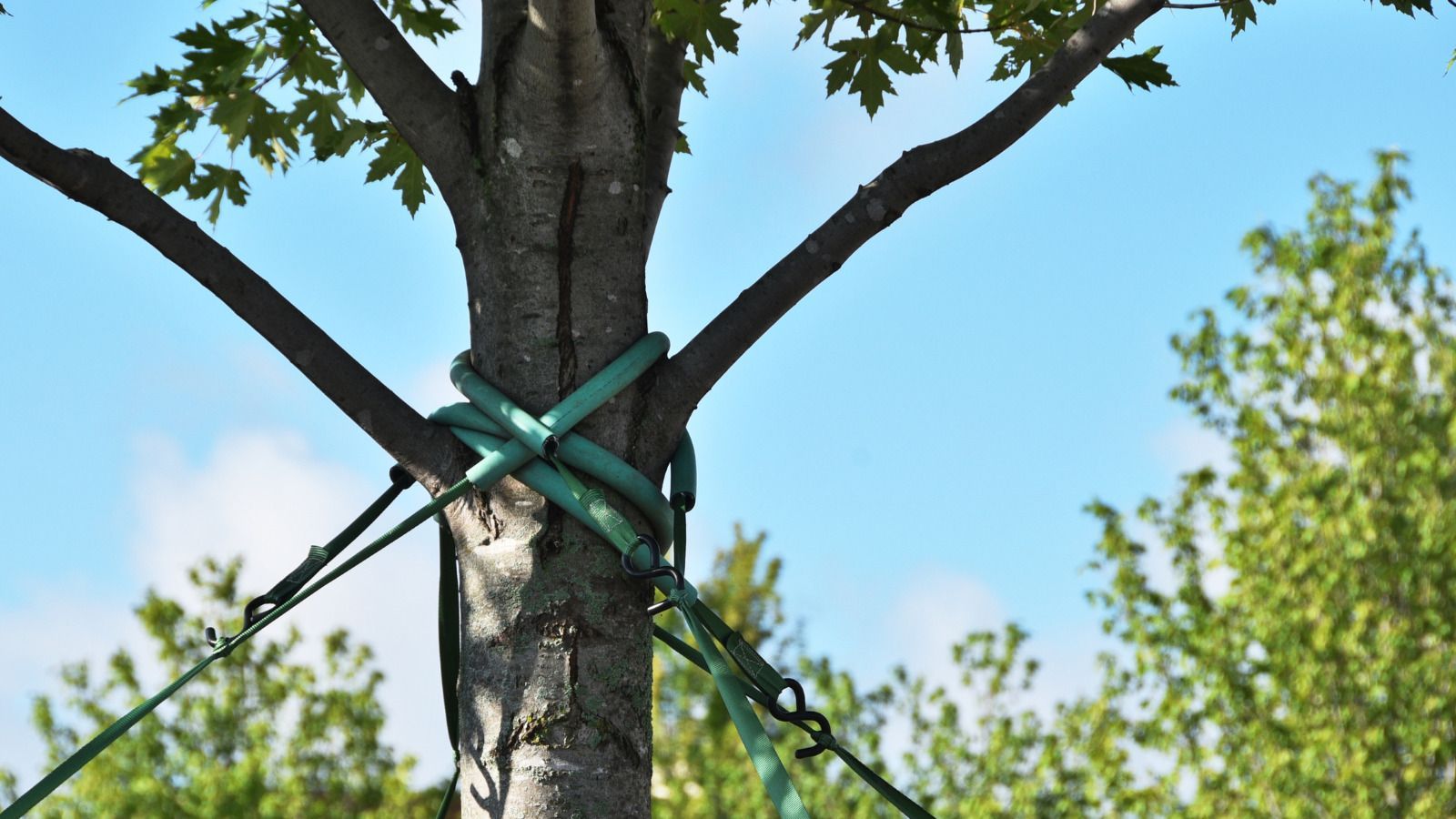
Is Cabling and Bracing Safe for the Tree?
Yes—when done correctly by professionals. Hardware is installed with minimal damage, and modern materials are designed to last years without harming the tree. Plus, ongoing inspections ensure everything stays in working order.
Professional Tree Evaluation
Only a certified arborist can determine if a tree needs cabling or bracing. They’ll evaluate the tree’s structure, health, species, and surroundings before recommending a solution.
Ready to schedule an expert visit? Contact us today for a professional tree inspection.
DIY vs. Hiring a Professional
DIY Cabling? Not recommended. Tree support systems require precision, expertise, and specialized tools. A bad installation could worsen the damage or endanger your property.
Hiring a professional ensures:
- Correct materials and techniques
- Minimal impact on tree health
- Long-term success and monitoring
Costs Involved in Tree Cabling and Bracing
Prices vary based on:
- Tree size and species
- Number of cables or rods needed
- Accessibility of the site
- Local labor rates
Typical range: $200 to $1,000+ per tree. While it may seem like a big investment, it’s far less expensive than dealing with tree removal or property damage.
Tree Species Most in Need of Support
Some trees are more prone to structural issues:
- Silver Maple
- Bradford Pear
- Live Oak
- Hackberry
- Boxelder
If you own one of these species, it’s smart to get it inspected early on.
How to Maintain a Cabled or Braced Tree
Post-installation care includes:
- Annual inspections by an arborist
- Adjusting cables if the tree grows
- Checking for rust or wear on hardware
- Pruning to reduce weight on supported limbs
Myths and Misconceptions About Tree Cabling
- “It’s cheating nature.”
Actually, it helps the tree survive naturally longer. - “It stops the tree from growing.”
Nope! Trees continue to grow normally. - “All trees with cracks need cabling.”
Not always. Some defects are stable without support.
How Tree Cabling and Bracing Can Save Your Trees from Structural Failure
Tree cabling and bracing offer a lifeline to trees that might otherwise be removed. These methods give support exactly where it's needed, allowing the tree to heal, thrive, and remain safe. Countless property owners have saved 100-year-old oaks, storm-damaged pines, and even prized fruit trees by installing these support systems.
Whether it's a historic tree that shades your home or a sentimental tree planted generations ago, these techniques can protect what matters most.
FAQs
What is the lifespan of a cabling system?
Most systems last 10–15 years with proper maintenance.
Can any tree be cabled or braced?
Not all. A professional will evaluate if your tree is a good candidate.
Does cabling hurt the tree?
When done right, it causes minimal damage and can extend the tree’s life.
How often should I inspect my tree after cabling?
Once a year is ideal, or after major storms.
Is it better to brace or remove a split tree?
In many cases, bracing can save a split tree—if caught early.
Will insurance cover damage from an unsupported tree?
It depends, but many insurers deny claims if tree neglect is proven.
Conclusion
Tree cabling and bracing aren't just technical fixes—they're life-saving solutions for your trees. When applied correctly, they prevent accidents, extend the life of your trees, and preserve your landscape’s beauty for years to come. If your tree shows signs of stress or damage, don’t wait. Take action and protect your green investment today.
Visit our Tree Service or Contact us to get started with expert support that ensures your trees stay strong, safe, and beautiful.
